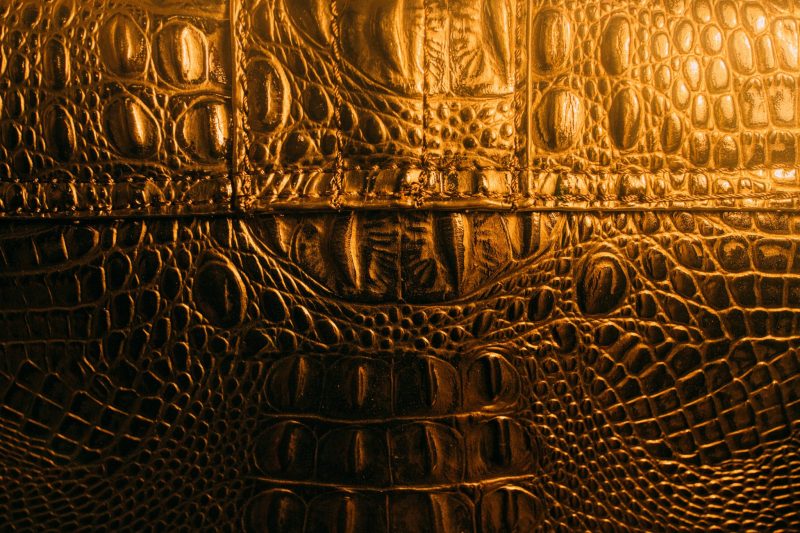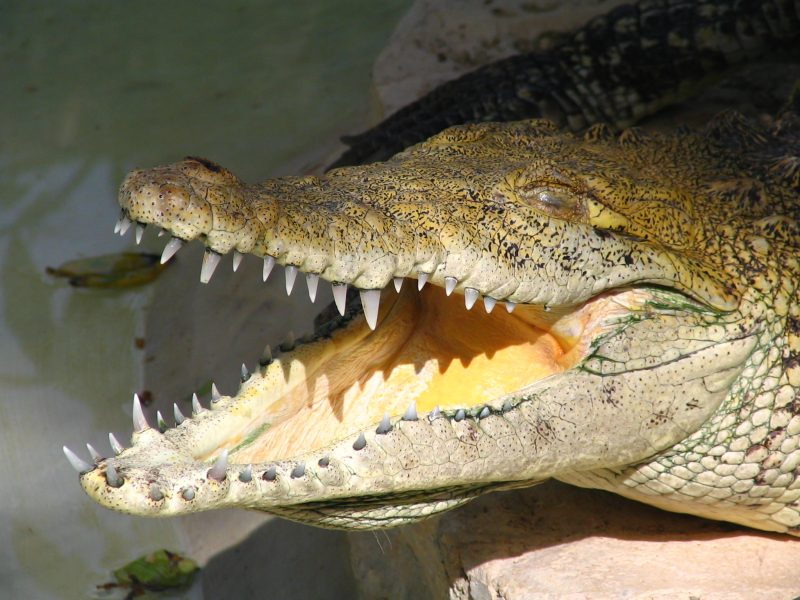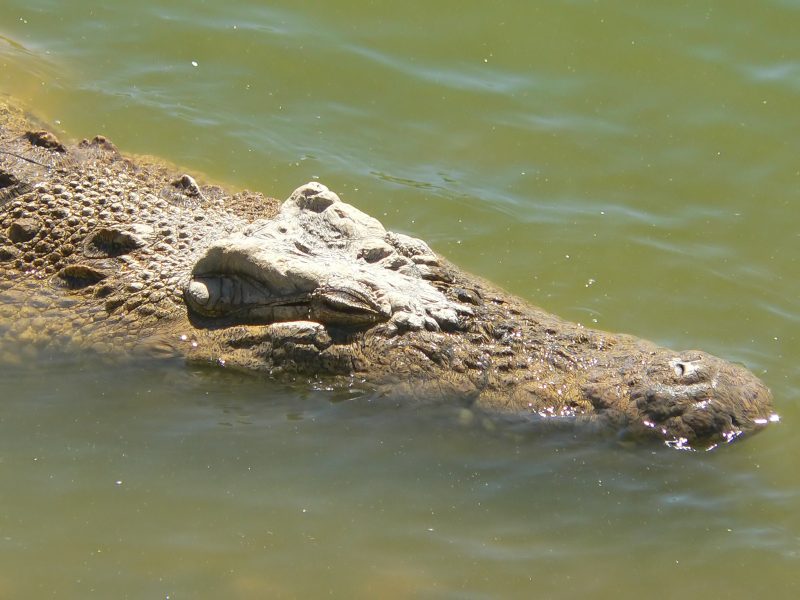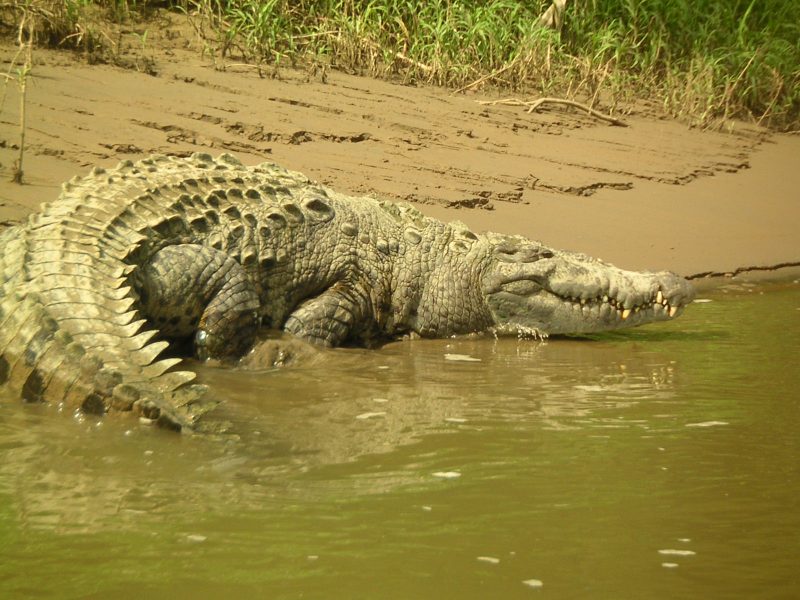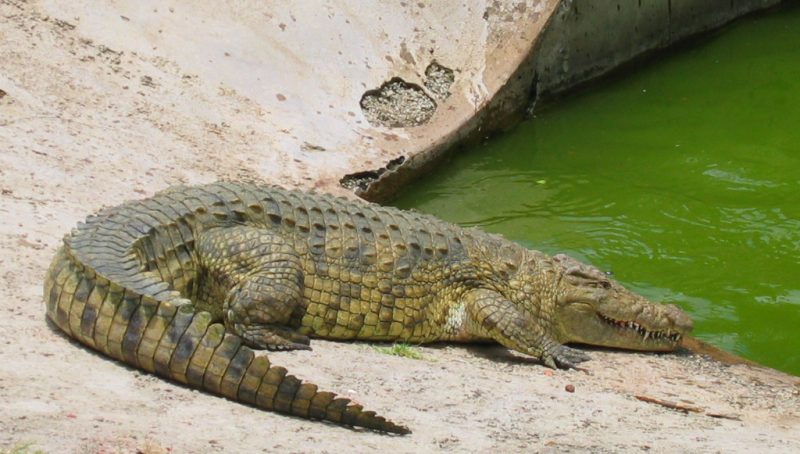Features Of High-Quality Crocodile Leather
In countries like Kenya where crocodiles exist, they are commonly found living in rivers and wetlands. Being one of the oldest species on earth, they are a favorite among safari travelers from all over the world. These carnivores typically feed on other animals like fish, mammals, reptiles and sometimes even other crocodiles. They may look sluggish and slow while stationary. But it is one of the most powerful and strongest natural predators that will attack and eat any living being that crosses its path. With their powerful tails, strong jaws and sharp teeth they are quick to attack as they can move swiftly through the water. One distinguishable behavior of a crocodile is rolling or spinning in the water to pull off the meat from its unsuspecting prey.
Skin of crocodile
Human beings are the only threat to crocodiles. People farm them mainly for their skin to make high-quality leather. Interconnected scales and osteoderms constitute their hides. Crocodile skin undergoes processing and tanning before it converts to leather. It is exotic due to its rarity and the timeless craftsmanship required to produce a finished hide for production uses. The tail, legs, head, and many other body parts contribute unique styles, creating a diverse palette, making car covers, lipstick holders and money clips out of them. As a material for making accessories, crocodile skin is a constant source of wonder. The supply of total skins available globally is still small. Its rarity determines that products made of crocodile skin will never be mass market.
Cuts of leather
The leather comes in two cuts for leathercraft. A Belly Cut or belly leather is the term given to the entire underside of its belly, tail, and chin. It is tender, pliable, smooth, flat and soft. It is the most expensive piece of skin that is popular with wallets, purses, watch straps, belts, handbags, and upholstery. A Back Cut or back leather is the piece of skin running down its spine from behind the head to its tail, including four rows of raised osteoderms. The back of a crocodile bristles with the horny, bone-hard scales. It is popular in applications and trimmings such as briefcases, big bags, barbed belts, horn back boots or products with a rough surface.
Skill of tannery
It very often happens that leathers from different species of crocodile are tanned differently, even if worked in the same tannery. Fundamental to establishing and guaranteeing the prestigious appearance, elegance, quality, and beauty of leather is the tanning process. It is usually the work of craftsmen who know their job and put determination and passion into everything they do.
Matt, glossy, metallic
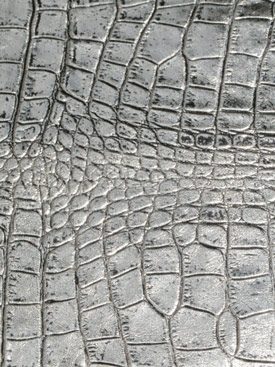
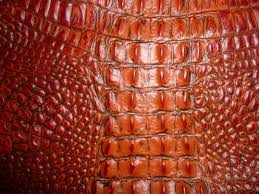
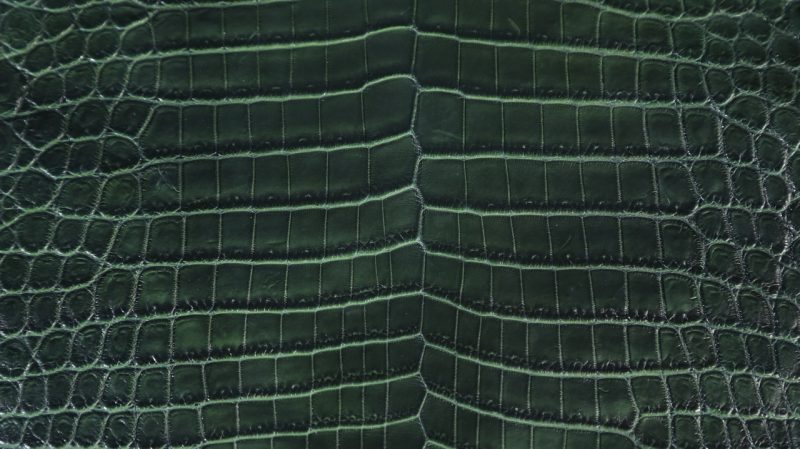 The skin gets its matte, glossy or metallic finish from tanning. Other finishes are additional processes after tanning. Regardless of finish, the quality of the skin is the same. The natural pigmentation of the skin is bleached out during the tanning process, allowing the tanner to dye it any color. All colors come with longevity in mind and subtlety that the fashion trends demand. The choice matte versus glossy versus metallic finish is one of personal preference.
The skin gets its matte, glossy or metallic finish from tanning. Other finishes are additional processes after tanning. Regardless of finish, the quality of the skin is the same. The natural pigmentation of the skin is bleached out during the tanning process, allowing the tanner to dye it any color. All colors come with longevity in mind and subtlety that the fashion trends demand. The choice matte versus glossy versus metallic finish is one of personal preference.
Measurement of leather
Crocodile skins are measured by the width of the largest portion of the body of the crocodile, at the second bone on its either side. The pattern width does not determine the value of a hide. Hence, it is important to look at the measurements of the overall skin when purchasing the leather.
Grading of leather
Crocodile skin classification determines the price of the leather. Grade A hide, or top-quality skins are of the best leather, which will be free of defects. Grade B leather possesses inconsistencies and flaws. However, there is usually a portion that is suitable for smaller applications like trims, wallets, and hats. Some defects that affect the grading include scar tissue, discoloration or uneven dye, and holes of any kind such as errors in the tanning process.
Quality of skin
Some items are made of precious pieces of leather while poorer quality leather is used to make some other things. This distinction is because crocodile leather products become affordable and accessible to more people with different price range. Comparing these two types, the differences in the beauty and quality of the items will be obvious.
Real or fake
A high-quality stamped leather can look like genuine crocodile skin. It can correctly reproduce the standard design. The incredible softness of the fake leather makes it easily confused with real skin. Hence, it is easy to mistake a stamped leather for a natural skin. A rule of thumb to follow is that a stamped leather product will be significantly cheaper than the same model in real crocodile leather. Nonetheless, on closer inspection, it is easy to distinguish between the two. However, without touching and scrutinizing the leather in great detail, giving an objective and accurate judgment is extremely difficult.
Fake crocodile leather
The natural design of fake crocodile leather looks too repetitive and regular. The structure and dimensions of the scale forming the design look too perfect. The thickness of the artificial leather remains too uniform. Besides that, stamped leather is usually glossy while real crocodile skin is available both in matt and gloss versions and the effect always remains breath-taking and refined.
Genuine crocodile leather
Minor crocodile skins, whose skin is still malleable and soft, are used to manufacture original items. A medium-sized item would require more than one piece of skin. Bear in mind, though, that the look and appearance of authentic crocodile leather can depend on many factors.
When it comes to distinguishing between fake and real crocodile leather, there are no hard and fast rules. It is ambiguous and depends on a combination of several factors. It takes real skill and years of experience to tell them apart. This expertise is hard to find as it is a very specialized field. It is this rarity that makes crocodile leather a valuable and expensive item.
5 Frequently Asked Questions About Crocodile Leather
To receive a colourful digibook about crocodile with videos, images and text, please fill out the following form or simply email us on safaris@safari-center.com

